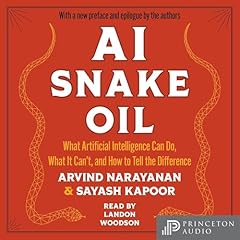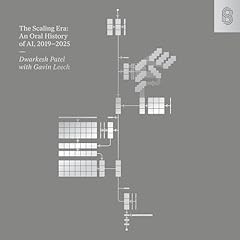
Why Machines Learn
The Elegant Math Behind Modern AI
Artikel konnten nicht hinzugefügt werden
Leider können wir den Artikel nicht hinzufügen, da Ihr Warenkorb bereits seine Kapazität erreicht hat.
Der Titel konnte nicht zum Warenkorb hinzugefügt werden.
Bitte versuchen Sie es später noch einmal
Der Titel konnte nicht zum Merkzettel hinzugefügt werden.
Bitte versuchen Sie es später noch einmal
„Von Wunschzettel entfernen“ fehlgeschlagen.
Bitte versuchen Sie es später noch einmal
„Podcast folgen“ fehlgeschlagen
„Podcast nicht mehr folgen“ fehlgeschlagen
 Bist du Amazon Prime-Mitglied?
Bist du Amazon Prime-Mitglied? Audible 60 Tage kostenlos testen
Aktiviere das kostenlose Probeabo mit der Option, monatlich flexibel zu pausieren oder zu kündigen.
Nach dem Probemonat bekommst du eine vielfältige Auswahl an Hörbüchern, Kinderhörspielen und Original Podcasts für 9,95 € pro Monat.
Wähle monatlich einen Titel aus dem Gesamtkatalog und behalte ihn.
Für 20,95 € kaufen
-
Gesprochen von:
-
Rene Ruiz
-
Von:
-
Anil Ananthaswamy
Über diesen Titel
Machine learning systems are making life-altering decisions for us: approving mortgage loans, determining whether a tumour is cancerous, or deciding whether someone gets bail. They now influence developments and discoveries in chemistry, biology, and physics—the study of genomes, extra-solar planets, even the intricacies of quantum systems. And all this before large language models such as ChatGPT came on the scene.
We are living through a revolution in machine learning-powered AI that shows no signs of slowing down. This technology is based on relatively simple mathematical ideas, some of which go back centuries, including linear algebra and calculus, the stuff of seventeenth- and eighteenth-century mathematics. It took the birth and advancement of computer science and the kindling of 1990s computer chips designed for video games to ignite the explosion of AI that we see today. In this enlightening book, Anil Ananthaswamy explains the fundamental math behind machine learning, while suggesting intriguing links between artifical and natural intelligence. Might the same math underpin them both?
As Ananthaswamy resonantly concludes, to make safe and effective use of artificial intelligence, we need to understand its profound capabilities and limitations, the clues to which lie in the math that makes machine learning possible.
*This audiobook contains a PDF of equations, graphs, and illustrations.
Noch keine Rezensionen vorhanden



















